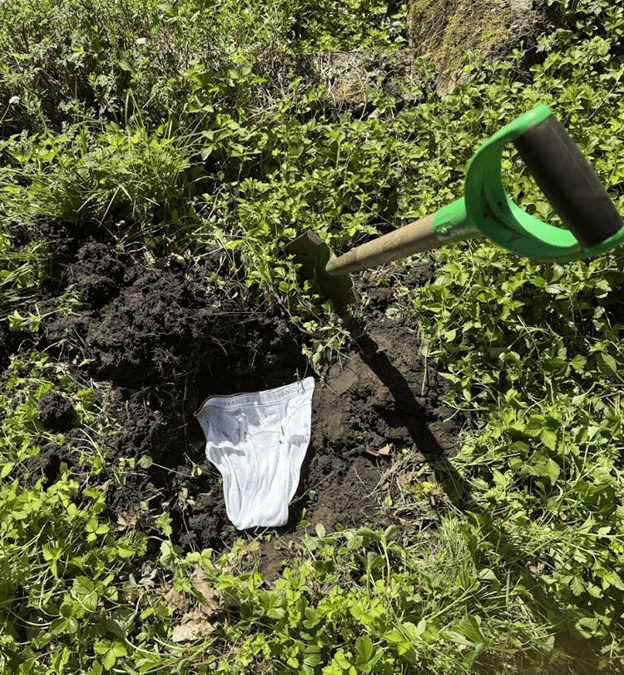A playful project with a powerful message about the importance of soil health
This spring, the Oswego Lake Watershed Council invited residents to take part in a hands-on experiment with a quirky name and a serious purpose: the Soil Your Undies Challenge. The idea was simple—bury a pair of 100% cotton underwear in your yard, wait 60 days, and then dig it up to see how much had decomposed. The results? A fascinating look at the health of our soils—and a great conversation starter about how we care for the land beneath our feet.

Before

After
The challenge was part of a growing effort to bring science into our neighborhoods in fun, accessible ways. By encouraging people to interact directly with their soil, the project highlighted just how alive healthy soil really is. The more microbial activity in the ground, the more those cotton briefs break down—a clear (and biodegradable) sign of biological life at work.


What We Learned
Soil health is more than just good dirt—it’s a living system. In a healthy soil environment, microorganisms such as bacteria, fungi, and insects work together to decompose organic material, feed plant roots, and build a strong soil structure that supports everything from backyard gardens to native trees. These interactions create aggregates—tiny clumps that improve how soil holds water, allows roots to grow, and resists erosion.
Unfortunately, many urban soils have been compacted, stripped of organic matter, or exposed to chemical treatments, leaving them less able to perform these essential functions. But the good news? Even small changes in yard care can have a big impact.
Simple Steps for Healthier Soil
Throughout the Challenge, OLWC shared regenerative landscaping practices that anyone can adopt:
- Keep Living Roots Year-Round: Use native perennials, cover crops, or multi-season gardens to keep the underground ecosystem active.
- Minimize Disturbance: Avoid frequent tilling or digging, which can disrupt soil structure and microbial networks.
- Maximize Soil Cover: Mulch with organic materials, leave fallen leaves, and plant densely to shield soil from heat and erosion.
- Encourage Biodiversity: Mix plant types, incorporate native species, and create habitats for pollinators and beneficial insects.
- Ditch the Chemicals: Choose compost, companion planting, and organic methods to support healthy soil life without harming it.
Building Resilience from the Ground Up
Healthy soil supports far more than plants—it contributes to cleaner water, increased carbon storage, and more resilient ecosystems in the face of climate change. In urban areas, these benefits are especially important. The Soil Your Undies Challenge offered a lighthearted way to start deeper conversations about how our everyday choices—what we plant, how we mulch, whether we use pesticides—can shape the future of our landscapes.
To learn more about soil health and sustainable practices in your yard, visit oswegowatershed.org or explore resources from the USDA Soil Health Division and OSU Extension Service.

